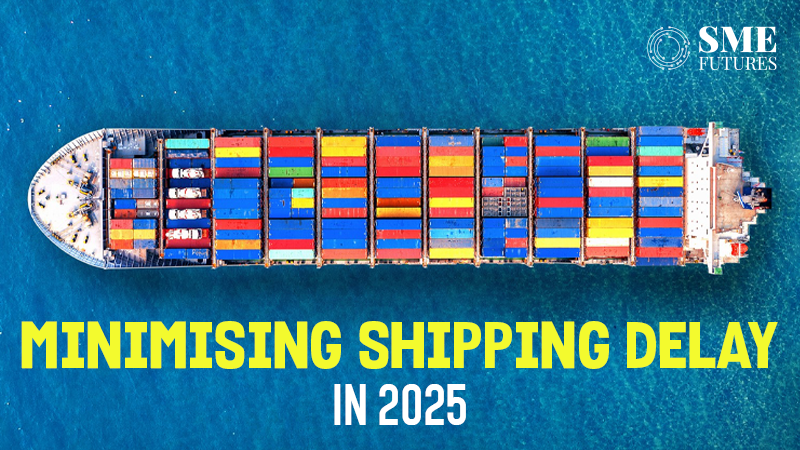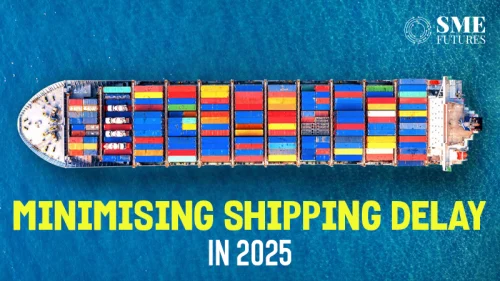Swift delivery defines customer satisfaction. Small and Medium Enterprises (SMEs) face mounting pressure to streamline their shipping operations. A sudden surge in orders should be cause for celebration. Instead, many SME owners are overwhelmed by the logistics challenges that follow success. When holiday seasons hit or social media drives unexpected traffic, these businesses often face a painful reality: their shipping operations aren’t scaled for success. What begins as a moment of triumph can quickly transform into a logistics nightmare, leading to delayed deliveries and disappointed customers.
This challenge hits particularly close to home for small businesses. While industry giants can absorb shipping disruptions with robust infrastructure and dedicated logistics teams, SMEs operate within tight constraints. Recent market research reveals that 40 per cent of consumers permanently abandon brands after experiencing shipping delays- a statistic that carries particular weight for smaller businesses where every customer relationship matters.
“As we navigate through 2025’s increasingly demanding e-commerce landscape, the ability to deliver reliably isn’t just about maintaining customer satisfaction- it’s about ensuring business sustainability in a competitive market,” said Ravi Goel, Chief Business Officer at RapidShyp.
Understanding root causes of delays
Unlike large corporations with extensive logistics networks, SMEs often operate with limited resources, making them particularly vulnerable to shipping disruptions. To effectively combat delays, one must first understand their origins, asserts Goel.
“High-order volumes, often driven by seasonal peaks or promotional events, can overwhelm shipping networks and lead to delays. Unpredictable weather conditions and natural disasters also disrupt transportation routes, compounding logistical challenges,” he said.
Additionally, supply chain issues, such as port congestion and freight shortages, can trigger a cascade of delays that ripple across the entire system. Address errors, whether due to incorrect or incomplete shipping information, also hamper the accuracy and efficiency of deliveries, he added.
Furthermore, inventory shortages resulting from stockouts contribute to backlogs, further hindering timely order fulfilment. “Understanding these factors is crucial for SMEs seeking to mitigate shipping disruptions and maintain reliable service. However, several practical strategies can help small businesses maintain reliable shipping operations without overwhelming their capabilities,” Goel said as he discusses six strategies, SMEs can minimise shipping delays in 2025.
1. Strategic inventory management
For SMEs, effective inventory management doesn’t necessarily mean implementing expensive systems. Start with basic but crucial practices: maintain detailed stock records, establish reorder points for popular items, and regularly analyse sales patterns. “Consider implementing cloud-based inventory management solutions that scale with your business. These systems can help predict demand trends and prevent stockouts, which are major contributors to shipping delays,” Goel emphasised.
The key is to focus on your fastest-moving products. Maintain higher safety stock levels for these items during peak seasons and set up automated alerts when inventory drops below critical levels. This approach helps prevent the costly stockouts that often lead to shipping delays and customer disappointment.
2. Partnering with courier aggregator
While larger businesses might have dedicated shipping departments, SMEs can create resilience by partnering with courier aggregators to assist them with multiple regional and national carriers for faster deliveries. This approach provides flexibility during peak seasons and helps maintain service levels when primary carriers face challenges. Aggregators evaluate carriers based on their performance in specific delivery areas and negotiate terms that align with volume and budget constraints.
“These partnerships can provide cost-effective solutions for urgent orders while maintaining customer satisfaction. They provide detailed records of carrier performance through historical data to help make informed decisions about routing future shipments,” he said.
3. Streamline order processing
Small businesses can significantly reduce shipping delays by optimising their order processing workflow. Implement a standardised system for order verification, packing, and labelling. Consider pre-packing your most popular items during slower periods to handle rush times more effectively. This preparation can significantly reduce processing time when orders surge.
“Create detailed standard operating procedures (SOPs) for your fulfilment team. These should include specific guidelines for handling different types of orders, managing priority shipments, and addressing common issues. Well-documented processes help maintain consistency even during staff changes or high-volume periods,” Goel highlighted.
4. Leverage local fulfillment options
While establishing multiple warehouses might be impractical for most SMEs, consider partnering with local fulfilment centres in your key markets. This approach can reduce shipping distances and delivery times without requiring significant capital investment. Many third-party logistics providers offer flexible solutions specifically designed for small businesses.
Research shows that reducing shipping distance by storing inventory closer to customers can cut delivery times by up to 25 per cent. Even utilising a single strategic fulfilment partner in your busiest market can significantly improve overall delivery performance.
5. Implement smart address verification
Address errors remain a leading cause of delivery delays, yet they’re among the most preventable. Invest in basic address verification software that integrates with your existing systems. While enterprise-level solutions might be costly, several affordable options cater specifically to SMEs. This investment can significantly reduce the number of failed deliveries and re-shipping costs.
“Train your customer service team to double-check shipping addresses during order confirmation, especially for high-value or time-sensitive shipments. Implementing a simple address verification checklist can prevent costly mistakes and improve delivery success rates,” he added.
6. Proactive customer notifications
One of the most effective ways to prevent shipping delays and enhance the customer experience is by proactively notifying customers about their delivery schedules. SMEs can rely on shipping tech to send real-time updates to buyers across various communication channels such as email, SMS, or mobile apps.
“These notifications can inform customers about their expected delivery time and allow them to confirm their availability. If the buyer is unavailable at the scheduled time, an IVR can capture their preferences and offer alternative delivery options. This proactive approach prevents missed deliveries and improves overall customer satisfaction by offering greater flexibility and control over the delivery process,” he said.
Looking Ahead
As we continue through 2025, shipping efficiency remains a critical differentiator for SMEs. While larger competitors might leverage extensive resources and advanced technologies, small businesses can achieve comparable reliability through careful planning and strategic implementation of these core practices.
The key lies not in matching the scale of larger operations but in creating efficient, adaptable systems that work within your business’s scope. By focusing on these fundamental areas, SMEs can build resilient shipping operations that maintain customer satisfaction while supporting sustainable business growth.
Remember that improving shipping efficiency is an ongoing process. Start with the most impactful changes for your specific business model and gradually implement additional improvements as resources allow. In today’s market, reliable shipping isn’t just a competitive advantage—it’s essential for business survival.











